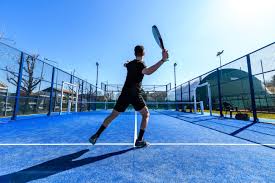

The Rise of Padel in China A New Court of Interest
In recent years, the world of sports has seen a surge in the popularity of one particular game padel. Originating from Mexico in the 1960s, this racket sport has gained a massive following in Europe and Latin America and is now making its way into the heart of Asia, particularly China. The emergence of padel courts across the country signals a new chapter in the evolution of sports in China, and the dynamics surrounding this game are worth exploring.
What is Padel?
Padel is a fast-paced game that combines elements of tennis and squash. Played in doubles on a court roughly one-third the size of a tennis court, it features walls that players can use to their advantage. The appeal of padel lies in its accessibility; the rules are easy to understand, and the physical exertion required is suitable for players of all skill levels. This makes it an attractive option for families, social gatherings, and competitive sports enthusiasts alike.
The Growth of Padel in China
China has been traditionally dominated by sports like basketball, table tennis, and badminton. However, with the country's increasing interest in wellness and fitness, new sports have begun to capture the public’s attention. The establishment of numerous padel courts, particularly in metropolitan cities such as Beijing, Shanghai, and Guangzhou, reflects this trend. These courts are often located within sports complexes or leisure centers, lending themselves to easy access for urban dwellers.
The significant investment in padel facilities indicates a growing belief in the sport’s potential for both recreation and competition. Major sponsors and sports brands are beginning to back padel events, and local clubs are forming tournaments to promote the game. This development is not only about sports; it also promotes community engagement and social interaction among participants.
Why is Padel Gaining Popularity in China?

One of the reasons for padel's swift rise in popularity in China is its social aspect. Unlike many individual sports, padel is primarily played in doubles, making it a more social endeavor. Friends and families can enjoy playing together, fostering community spirit and collaboration. In a country where social engagement is vital, this aspect resonates well with both younger and older generations.
Moreover, padel is a relatively low-impact sport, appealing to a broad demographic range, including those who may find tennis or badminton too physically demanding. Age is not a barrier, which encourages participation across various age groups, thus promoting a healthier lifestyle.
Challenges and Future Prospects
Despite its rapid growth, padel faces challenges in establishing itself as a major sport in China. Sport culture can be significantly influenced by tradition, and introducing a new game requires overcoming inertia and fostering acceptance. Additionally, media coverage and exposure in prominent sports broadcasts can catalyze further interest in padel. Without significant promotion, the game may struggle to achieve the status of more traditional sports.
However, the future looks bright for padel in China. With the nation’s commitment to sports development and the promotion of physical fitness, padel courts are likely to become a regular sight in urban areas across the country. This could also lead to a thriving ecosystem that includes coaching programs, youth leagues, and professional events, contributing to China’s sporting diversity.
Conclusion
The rise of padel in China marks an exciting evolution in the sporting landscape of the country. With its unique blend of competition and social interaction, padel suits the modern lifestyle and increasingly health-conscious population. As more courts open and interest continues to build, padel is poised to become not only a recreational pastime but also a professional sport in its own right. The coming years could very well see China embracing padel with the same enthusiasm it has shown for other traditional sports, adding a new dimension to its rich sports culture.
High-Performance Industrial Flooring Solutions China Paddle Tennis Court for Sale
High-Performance Industrial Flooring Solutions Durable & Cost-Effective
Homogeneous Transparent Floor – Durable & Stylish Rubber Floor Solutions
Premium Homogeneous Transparent Floor for Durable & Stylish Spaces Rubber Floor Solutions
Premium Sports Floor Solutions Durable PVC Sports Floor & Rubber Floor for Gyms
Durable Rubber Composite Floor Premium Rubber Floor & Mats Solutions